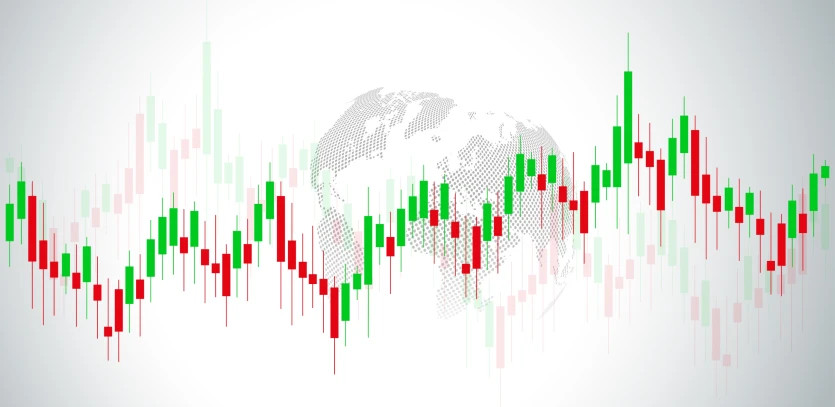Supply and demand is one of those strategies where it's very easy to lose money, but not make it.
Over the years, I've seen lots of traders fail to make money from the zones. Most put this down to making mistakes, either personal (like moving a stop too soon) or with the strategy itself, like drawing the zones the wrong way or finding the wrong zones.
But while these mistakes do cause lots of traders to lose, something else also does I don't think many traders realize...
Today I'm going to explain what this is, and why I believe it's the #1 reason why most supply and demand traders lose money.
Let's get started.
The Real Reason Supply And Demand Traders Lose Money
It's easy to think supply and demand traders lose because they make mistakes, and they do.
Drawing the zones incorrectly, trading the wrong zones, and entering with the wrong signal are all mistakes that cause supply and demand traders to lose on a daily basics. However, as bad as these mistakes are and as much as they cause traders to lose, there's something else that causes a lot more losses than any of those above...
Trading old zones.
"Old zones? But that's what {insert gurus' name} told us to trade?"
And this exactly my point.
Many S + D guru's say old zones cause reversals, so supply and demand traders naturally trade them as if they're the same as every other zone.
The problem is, they don't cause reversals, they just look like they do.
Because price often reverses from inside the zone, traders think the zone itself is causing the reversal, but it isn't... something else is causing it. It just looks like the zone because price has reversed from the same point.
To understand why old zones don't cause reversals, we need to talk about the banks.
Supply and demand zones form from the banks buying and selling . The reason we see price return and reverse from a zone is because the banks weren't able to place all their trades or take all their profits at one price, due to not enough buy or sell orders being available.
Now, when the banks place the rest of their trades or take their remaining profits - which is what causes price to reverse from a zone - do you think they want them placed quickly, or weeks, months, or years later?
Quickly right?
It doesn't make sense to wait weeks, months, or years. If they've bought or sold to cause a zone to form (whether to take profits or place trades), they'll want price to return right away. Otherwise, their reasoning behind placing trades/take profits in the first place may not exist anymore.
This is why old zones don't cause reversals.
The idea price returns to a zone because the banks still have trades left to place/profits to take weeks, months or even years later when the entire market has changed is just ludicrous. It's doesn't make any sense.
If they wanted to get their trades placed/profits taken, they'd do it quickly. They wouldn't wait weeks, months, or years they'd do it ASAP.
So, old zones don't cause reversals.
I know they look like they do because price reverses from them, but it's not the zone actually creating the reversal, it's something else. I don't know what that is (it depends on the zone and what was happening at the time), but it's definitely not the zone, it just looks like it is.
So How Long Should It Take Price To Return To A Zone?
Price should return to supply and demand zones quickly. It shouldn't take days, weeks, or months as the gurus say, it should return and then reverse soon after a zone forms. But how long is that? Well, it all depends on what time frame the zone has formed on.
The time-frame tells you what timescale the banks have in mind for making price return to a zone.
For example, if a zone forms on the daily, the banks will want price to return within a few weeks, as it takes them time to accumulates enough orders (by making price move up and down) to be able to place the rest of their trades or take their remaining profits off.
I've come up with a few guidelines you can use to know how long it should take price to return to a zone based on what time-frame it's formed on:
- 1 min/5 min/ 15 min - 1 day.
- 30 min/1 hour/4 hour - 20 days.
- Daily - 3 months.
Remember, these are just guidelines. They're not stone-cold rules that can't be broken.
If you see price return to a zone a few points after the times above e.g 33 days instead of 30 days for 1-hour zones, the zone is still valid for trading. It's impossible to be exact with the times, so you have to allow for a slight variance.
Another thing to keep in mind is if a zone forms inside a higher time frame zone, the zone falls under the rule for the higher time frame. So, for example, if a 1-hour zone forms inside a daily zone, the 1-hour zone is valid up to 20 days, since it's still inside the daily zone.
Summary
Try these rules out for a while, see what you think. They won't turn you into a profitable supply and demand trader overnight, but they will cut out many of the losses you have from trading old zones, which should allow you to make more money.

Learn how trade the right way. At priceactionninja.com, we teach you all aspects of price action trading. We have lessons and guides covering topics such as how the banks and large institutions trade forex, the correct way to trade pin bar reversals, and how to use supply and demand zones. Check us out today at: www.priceactionninja.com





